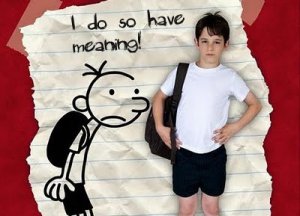A few months ago, when Gangnam Style fever had kids ponying around the country, two baffled Fox News pinheads personalities debated the song’s appeal.
 “I think what this fella Psy is tapping into…is the fact that people don’t want any meaning right now. The most popular music apparently is that without intelligible words…not reality, not feeling, not meaning.”
“I think what this fella Psy is tapping into…is the fact that people don’t want any meaning right now. The most popular music apparently is that without intelligible words…not reality, not feeling, not meaning.”
“So it means nothing…”
They never once considered that the song was in Korean and the gibberish they were hearing was indeed actual words in a different language, satirizing the wealthy Gangnam district of South Korea, an area obsessed with western culture.
From that mind-numbing discussion, they somehow segued into their perceived lack of meaning in children’s books.
Wait? What was that? No meaning in children’s books?! Oh yeah, the ignoramus commentator had a picture book rejected and was obviously still reeling from the sting.
“I had a little kids’ book I wrote; I sent it out to a few publishers. They bemoaned the fact…they said, gee, it seems like it has a message. I said, ‘Well, yeah, it’s about empowerment’. Well, books about messages right now aren’t selling.”
He then ridiculed WIMPY KID and OLIVIA, two of the best-selling children’s book series. (Probably because he didn’t think of them first.)
“Try to tell them about ‘courage’, that’s not going to be purchased by the great masses who now want not to be tapped on the heartstrings, if you will, but simply to be pushed toward ‘a good beat’.”
 Darn straight, readers want a good beat. What they don’t want is to be beat over the head with a lesson you think they need to learn.
Darn straight, readers want a good beat. What they don’t want is to be beat over the head with a lesson you think they need to learn.
Message-driven picture books begin with the intention of teaching a life lesson, like how to have good manners. With the writer’s purpose being so righteous, the story can come across as preachy and self-important. Why don’t these books sell? Because they lack the one thing that kids really want: FUN. Think about it—children are being taught all day long—at home, at school, at places of worship. When they pick up a book, do you think they want to hear “remember to say please and thank you” yet again? If I were a kid, I’d shelve that book pronto. Kids want to be entertained.
Message-driven books are not subtle. They often contain the very phrase the writer intends to teach, like: “Just be nice and you’ll always have lots of friends!” This is the classic mistake of “telling” instead of “showing” with your words. It’s talking down to kids, it’s assuming they’re not intelligent creatures with limitless imaginations.
Not all books with messages are message-driven. In fact, the best books do contain messages, but they are subtly woven through a wondrous story rich in character, setting and action. Every good story contains a universal emotional truth—friendship, family, fitting in—that is slowly revealed through the main character’s journey. The character at the beginning of the book is not the same person by the end; they have been transformed. How have they changed? Within the answer lies the lesson. Character is paramount, not the message.
I’m going to leap upon my soapbox now. I believe children’s books should be fun-driven. If books are going to compete with computers, iProducts and video games, authors need to deliver an escape, a fantastical world where anything can and does happen. I write with fun in the forefront. I think back to my childhood and the things that I loved—like secret hideouts adults didn’t know existed. I was fascinated by Dahl’s chocolate factory and the fact that he chose a kid to run it. (I hope I didn’t spoil that for anyone. It has been almost 50 years since the book was released.) A kid in charge! Marvelous!

So let’s circle back—does DIARY OF A WIMPY KID have a message? It sure does. I can name a bunch: being yourself, persevering through difficult situations, being able to laugh at yourself. These are all important life lessons.
No one would call Jeff Kinney’s series “message-driven”, yet a lot of people mistake FUN books for being worthless teachers, for being meaningless. I beg to differ. (And I beg Fox News to get a clue.)
It’s time to do the exact opposite of writing message-driven books: assume kids are already smart as whips. (Believe me, they are.) A message-driven book isn’t going to teach them anything except to avoid reading. And that’s a lesson no one needs to learn!



Rock on, Tara. I totally agree.
Bravo, Tara! Great post! A huge reason why I write children’s books is because I want to develop that love– that PASSION– for reading. Thanks for this!
I agree wholeheartedly. And I’m so glad you do what you do! Messagey books make me angry (there you go, messagey people, write a book that has the lines “Books are our friends. They shouldn’t make us angry.”) Bring on the FUN!
Preach, sister. Love this.
Agreed 100%
Excellent post, Tara!
Standing ovation! Well said!
We in the choir love this here sermon, Tara! Preach it!
Woo-hoo and Amen! Keep it up, darling! This is one to mark, to have handy when I don’t have the energy to respond to uninformed dribble. Thank you, thank you…
I have to disagree. I think the message that authors are getting is the story can’t have a message at all.
I have pretty strong messages and even the punchline states the message outright at the end – but they have a twist, are fun, and kids love them. I have received spontaneous applause. I had one little girl want ‘to marry me!’
Kids are grateful for the messages that they hear too little of. It is the message that their soul sings – but isn’t much reinforced in the world. It is about justice, right and wrong, fairness, compassion. The Berenstein Bears are about the preachiest books ever – and they were wildly successful. A friend just mentioned to me Thomas the Tank Engine – super messagy – but very popular. It is these books that truly speak to the child’s sense of who they WANT to be and how they want the world they live in to be.
If a positive message delivered to your children makes you angry – then there is something wrong – but not with the message. Granted, there are message books badly written -but that goes for all books of all kinds.
I think the message ought to be – books CAN have a message, they can and ought to teach us something, they ought to be elevating – they must also be fun, appealing, and thought-provoking. I don’t think the role of the artist is merely to entertain. I think it is to make us better people. And I think there is room for the merely entertaining – but NOT at the exclusion of the elevating.
Fox News? Oh, don’t even go there. No, really, don’t go there.
I’m glad I missed that broadcast. I would have been leaping outta my seat, yelling at the T.V.
I love your focus on FUN. And I think I needed to be reminded to remember what I loved when I was a kid (digging holes so deep and so wide, five of us could jump into it, with one kid still at surface level to pull us all out).